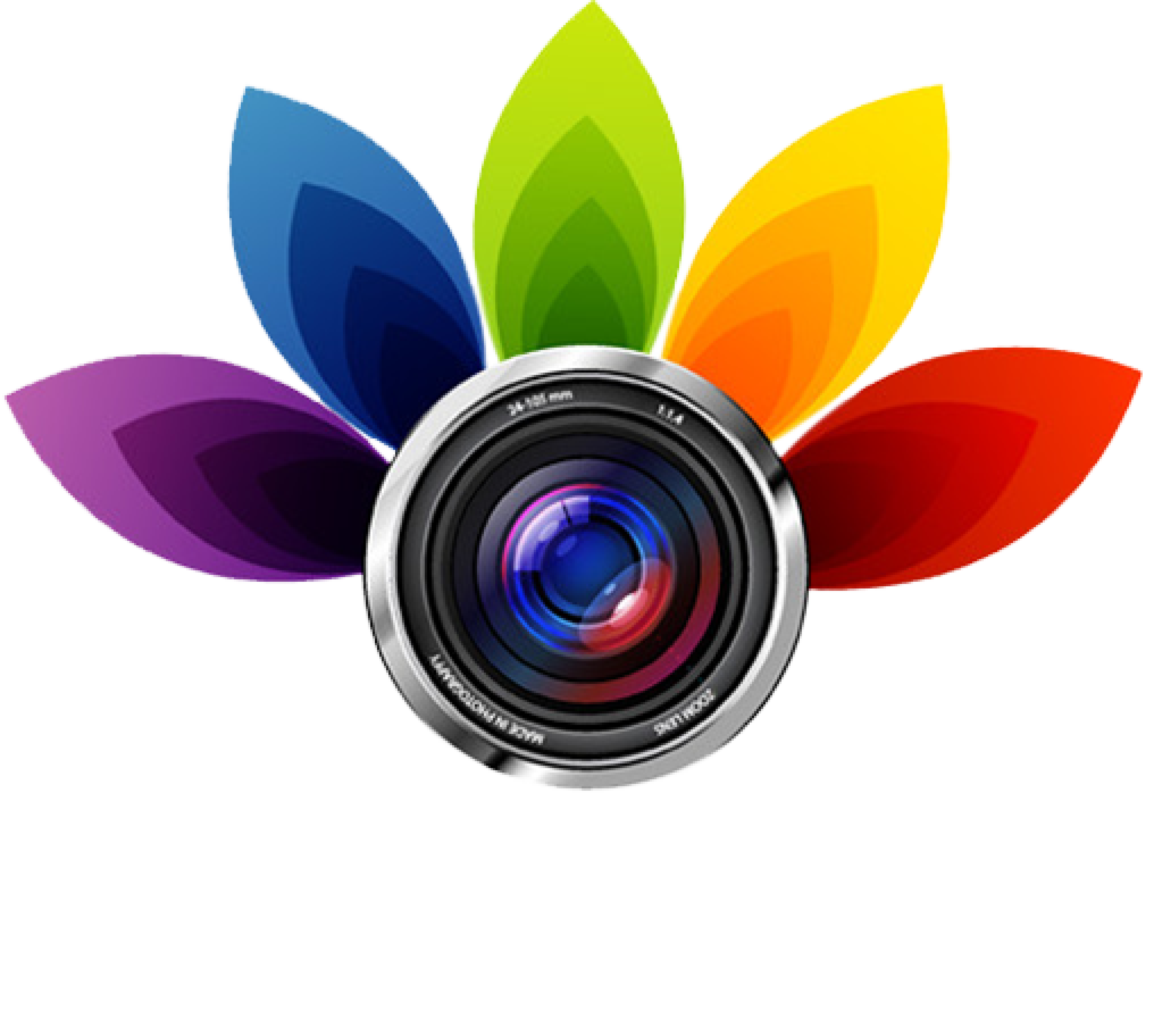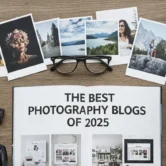
Beginner’s Guide to Setting Up a Studio Photoshoot
Setting up a studio photoshoot needs careful planning, the right tools, and attention to detail. A well-prepared studio lets you take high-quality photos with complete control over lighting, background, and composition. We’ll explain the key parts of setting up a successful studio shoot, including tips on lighting, gear, picking the right space, and choosing the best background.
Why Studio Setup Matters
A well-organized studio makes a big difference in how your photos look. Unlike outdoor photography, where the lighting and surroundings change all the time, a studio gives you full control over everything. A good setup helps create a professional look, keeps things consistent, and makes the work process smoother.
Having an organized space also makes things more efficient, so you don’t have to keep adjusting things. Your subject will feel more comfortable, leading to more natural expressions. If you’re working on portraits, product photos, or creative shoots, a well-planned studio layout is key to getting great results.
Easy Lighting Tips
Lighting is one of the most important things in studio photography. It affects the mood, depth, and quality of your photos. Knowing the different types of lighting and how to place them correctly will help you take better pictures.
Why Natural Light Matters?
 Natural light is a great choice, especially if you have large windows in your studio. It gives a soft, even look, which is perfect for portraits and lifestyle photography. To get the best results, shoot during daylight hours when the sun isn’t too strong. You can also use sheer curtains to soften the light and reduce harsh shadows.
Natural light is a great choice, especially if you have large windows in your studio. It gives a soft, even look, which is perfect for portraits and lifestyle photography. To get the best results, shoot during daylight hours when the sun isn’t too strong. You can also use sheer curtains to soften the light and reduce harsh shadows.
Placing your subject closer to the window creates a brighter, more natural effect, while moving them farther away gives a softer, more diffused look. If the light is too strong, using reflectors or white walls can help bounce it back for a more balanced exposure. Changing your shooting angle can also help control the strength of highlights and shadows.
How to Set Up a Studio Photoshoot Using Artificial Light
 If natural light isn’t available, artificial lighting is a good backup. Studio lights come in different types, like LED panels, softboxes, and ring lights. These options let you control the brightness and direction of the light, making it easier to get the effect you want. Unlike natural light, artificial lighting gives you consistency, so you can keep the same look throughout a shot.
If natural light isn’t available, artificial lighting is a good backup. Studio lights come in different types, like LED panels, softboxes, and ring lights. These options let you control the brightness and direction of the light, making it easier to get the effect you want. Unlike natural light, artificial lighting gives you consistency, so you can keep the same look throughout a shot.
It’s also helpful for working in low light or at night. Using multiple light sources can get rid of unwanted shadows and create a more interesting setup. Trying different color temperatures, like warm or cool lighting, helps you set the right mood for your photos.
Why Soft Lighting Works Best
 Soft lighting creates a gentle effect with a few shadows. It’s perfect for portraits, fashion, and product photography. Tools like softboxes, umbrellas, and diffusers help spread the light evenly, avoiding harsh contrasts. Placing lights at an angle instead of directly in front of the subject also helps create a smoother look.
Soft lighting creates a gentle effect with a few shadows. It’s perfect for portraits, fashion, and product photography. Tools like softboxes, umbrellas, and diffusers help spread the light evenly, avoiding harsh contrasts. Placing lights at an angle instead of directly in front of the subject also helps create a smoother look.
This type of lighting is great for showing skin in a pleasing way, as it reduces wrinkles and blemishes. It also works well for food and product photography, making textures look natural and attractive. By changing the distance between the light and the subject, you can adjust the softness and control the brightness of the image.
How Harsh Lighting Affects Your Studio Photoshoot Setup
 Harsh lighting creates strong shadows and high contrast, often used for dramatic effects, creative portraits, and black-and-white photography. Direct light sources, like a bare bulb or spotlight, can create sharp edges and intense highlights. While this technique adds depth, it’s important to use it carefully to avoid overexposure.
Harsh lighting creates strong shadows and high contrast, often used for dramatic effects, creative portraits, and black-and-white photography. Direct light sources, like a bare bulb or spotlight, can create sharp edges and intense highlights. While this technique adds depth, it’s important to use it carefully to avoid overexposure.
Harsh lighting is useful for emphasizing facial features, giving portraits a bold and edgy look. It also works well for highlighting textures in fashion or product photography, where you want the details to stand out. Adjusting the light angle or using partial diffusion can help soften the strongest highlights while keeping the dramatic effect intact.
Proper Light Positioning
 Where you place your lights affects the overall look of your photos. Front lighting provides even exposure and minimizes shadows, making it great for clear and well-lit portraits. Side lighting adds depth and dimension by creating contrast between light and shadow, giving the subject more definition.
Where you place your lights affects the overall look of your photos. Front lighting provides even exposure and minimizes shadows, making it great for clear and well-lit portraits. Side lighting adds depth and dimension by creating contrast between light and shadow, giving the subject more definition.
Backlighting creates a glowing outline effect, adding drama or highlighting textures in the image. Overhead lighting offers a soft, natural look, often resembling daylight from above. Understanding these setups allows you to achieve the right mood and effect for your photoshoots.
Basic Gear Checklist
Having the right tools helps create a professional and efficient workflow. The right equipment improves image quality and makes the shooting process smoother and more organized. Here are some of the most important pieces of equipment you’ll need when setting up a studio.
Camera and Lenses
 A good camera and lens are the foundation of any photoshoot. DSLRs and mirrorless cameras are popular choices, but the lens you choose is just as important. Prime lenses provide sharp details and are great for portraits, while zoom lenses offer flexibility for different compositions.
A good camera and lens are the foundation of any photoshoot. DSLRs and mirrorless cameras are popular choices, but the lens you choose is just as important. Prime lenses provide sharp details and are great for portraits, while zoom lenses offer flexibility for different compositions.
Macro lenses are perfect for close-up shots, which makes them ideal for product photography. Selecting the right camera and lens combination will improve image quality and help you achieve the specific look you want for each photoshoot.
Tripods and Stands
 A tripod keeps the camera steady, reducing blur and making it easier to adjust settings. It’s especially helpful for long exposure shots, product photography, or when taking multiple photos with the same framing. A sturdy tripod allows for hands-free shooting, which is useful when you need to make small adjustments to the subject or lighting.
A tripod keeps the camera steady, reducing blur and making it easier to adjust settings. It’s especially helpful for long exposure shots, product photography, or when taking multiple photos with the same framing. A sturdy tripod allows for hands-free shooting, which is useful when you need to make small adjustments to the subject or lighting.
Light stands are equally important as they hold softboxes, reflectors, or other lighting equipment in place. They help maintain consistent lighting and prevent accidental shifts that could impact image quality. Adjustable stands allow for flexibility in positioning lights at various angles, helping you achieve the perfect effect for each shot. Investing in quality tripods and stands ensures stability, reduces unwanted movement, and provides a more controlled shooting environment.
Accessories
Small tools can have a big impact in the studio. Reflectors are used to bounce light and fill in shadows, helping to create a more balanced and even look. Diffusers soften harsh lighting, allowing for a smoother and more consistent tone.
Wireless triggers provide hands-free shooting, offering more flexibility when adjusting angles and directing the subject. These accessories improve the efficiency of your workflow, making it easier to focus on creativity while ensuring better results in every photoshoot.
What to Consider When Picking a Space for Your Studio Photoshoot
Choosing the right location for your studio depends on the type of photography you plan to do. The space should be spacious enough to move freely, set up all your necessary equipment, and provide flexibility for different shooting angles. A well-chosen location helps maintain a smooth workflow and allows you to experiment with different setups easily.
Studio Size Tips
 When setting up a studio photoshoot, having enough space is key for arranging lighting, backdrops, and equipment. A wide area provides better movement, allowing you to adjust angles and experiment with different setups without feeling restricted.
When setting up a studio photoshoot, having enough space is key for arranging lighting, backdrops, and equipment. A wide area provides better movement, allowing you to adjust angles and experiment with different setups without feeling restricted.
It’s also helpful when working with multiple people, like photographers, models, and assistants, as it ensures everyone has enough room to work comfortably. A small space can cause obstructions, making it harder to achieve the best results. Choosing a location with ample room leads to a smoother workflow and greater control over your setup.
How Ceiling Height Affects Your Studio Photoshoot Setup
 A higher ceiling gives you more flexibility when positioning your lights. It allows you to place lights at different heights, which helps reduce harsh shadows and gives you better control over the look of your photos. Taller ceilings are also beneficial when using larger equipment, such as softboxes or overhead lights, as they provide more space for adjustments.
A higher ceiling gives you more flexibility when positioning your lights. It allows you to place lights at different heights, which helps reduce harsh shadows and gives you better control over the look of your photos. Taller ceilings are also beneficial when using larger equipment, such as softboxes or overhead lights, as they provide more space for adjustments.
On the other hand, low ceilings can limit your lighting options and make it harder to create certain effects. With taller ceilings, you have the freedom to adjust light angles, which is especially helpful for full-body portraits or large products that need even lighting.
Setting Up a Studio Photoshoot with the Best Wall Colors
 Neutral-colored walls, like white or gray, help avoid unwanted reflections that could impact your photos. Dark walls absorb light, while bright or colorful ones can cast unwanted tints onto your subject. Choosing the right wall color allows for better control over lighting, ensuring a more balanced setup.
Neutral-colored walls, like white or gray, help avoid unwanted reflections that could impact your photos. Dark walls absorb light, while bright or colorful ones can cast unwanted tints onto your subject. Choosing the right wall color allows for better control over lighting, ensuring a more balanced setup.
If repainting isn’t an option, large white or black panels can help control reflections. Matte finishes are ideal, as glossy surfaces can reflect light in unpredictable ways. Keeping the walls neutral also makes post-processing simpler by preventing color contamination in your final images.
Why Window Placement Matters in a Studio Photoshoot Setup
 Natural light from windows can be both an advantage and a challenge, depending on how it’s used. Large windows allow soft, diffused light, but direct sunlight can create harsh shadows. You can control this by using curtains or diffusers to manage the amount of natural light entering space. North- or south-facing windows typically provide more consistent lighting throughout the day, minimizing unwanted variations.
Natural light from windows can be both an advantage and a challenge, depending on how it’s used. Large windows allow soft, diffused light, but direct sunlight can create harsh shadows. You can control this by using curtains or diffusers to manage the amount of natural light entering space. North- or south-facing windows typically provide more consistent lighting throughout the day, minimizing unwanted variations.
If you’re using artificial lighting, be mindful of how window placement might cause glare or reflections on shiny surfaces. Being aware of how natural and artificial light interacts will help you get the best results in your photoshoots.
Simple Guide to Picking a Studio Photoshoot Background
The background plays a key role in setting the tone of the image and drawing attention to the subject. Different backdrops can create various moods and styles, so choosing the right one is important to keep the focus on the subject while enhancing the composition. A well-chosen background can complement the lighting, color scheme, and theme of the shoot, giving the final image a polished and intentional look. If you use solid colors or textured surfaces, the goal is to avoid distractions that could pull attention away from the subject.
Simple Studio Photoshoot Setup with Solid Backgrounds
 A solid background is simple and clean making it a popular choice for many types of photography. White, black, and gray are common options for a professional look. White creates a bright, airy feel, while black adds depth and drama, and gray provides a neutral middle ground that works well in various lighting conditions. Colored backgrounds can also be used to match a specific theme or brand, helping create a consistent visual identity.
A solid background is simple and clean making it a popular choice for many types of photography. White, black, and gray are common options for a professional look. White creates a bright, airy feel, while black adds depth and drama, and gray provides a neutral middle ground that works well in various lighting conditions. Colored backgrounds can also be used to match a specific theme or brand, helping create a consistent visual identity.
These backgrounds are ideal for headshots, product photography, and commercial shoots, as they keep the focus on the subject without distractions. Smooth paper, fabric, and collapsible backdrops are excellent choices for achieving a smooth and even color. Additionally, adjusting the lighting can change the tone of the background, adding variety to your shots without needing to change the backdrop itself.
Choosing Textured Backgrounds for an Interesting Studio Shoot
 Textured backgrounds add character and depth to an image, giving it a more artistic or rustic feel. Options like wood, brick, fabric, or painted canvases can introduce visual interest and make the photo more engaging. For example, a brick wall can provide an urban, edgy vibe, while a wooden panel backdrop adds warmth and a natural touch.
Textured backgrounds add character and depth to an image, giving it a more artistic or rustic feel. Options like wood, brick, fabric, or painted canvases can introduce visual interest and make the photo more engaging. For example, a brick wall can provide an urban, edgy vibe, while a wooden panel backdrop adds warmth and a natural touch.
Fabric backgrounds, such as muslin or velvet, can bring a soft, elegant quality to portraits, while painted canvases offer a classic, timeless look often used in fine art photography. This type of background works well for creative portraits, fashion photography, and storytelling themes, as it helps set the mood and context of the shot. By experimenting with different textures and colors, you can achieve a customized and unique look that improves your subject.
Conclusion
Setting up a studio photoshoot requires planning, but having the right tools and setup makes it easier. From choosing the right space to picking the best background, every element plays a role in achieving high-quality photos. Good lighting, proper positioning, and thoughtful equipment choices all contribute to a smooth workflow. If you’re just starting or refining your setup, focusing on these basics will help create a space that encourages creativity and professional results. With practice and experimentation, you’ll find the best setup for your style and needs. Keep improving, try different lighting techniques, and adjust as needed. A well-prepared studio leads to better photos and a more enjoyable shooting experience.
Read Next: Finding the Best Photography Studio in 5 Easy Steps





